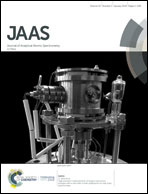Development and characterisation of new glycine certified reference materials for SI-traceable 13C/12C isotope amount ratio measurements
Abstract
Variations in the stable isotopic composition of carbon are commonly expressed as δ(13C) values, and are used in diverse fields, including biology, environmental sciences, food and drug authentication and forensic applications. Progress in these fields requires accurate and comparable stable carbon isotope ratio measurements between laboratories and over time. Yet concerns about comparability of measurement results for stable carbon isotopes have been raised due to both replacement of one primary reference material by another and, more recently, due to the increase of δ(13C) values of the second primary reference material (LSVEC) when exposed to the atmosphere. Establishing traceability to the SI as a stable metrological reference system can be a sustainable solution in ensuring accuracy and metrological traceability of measurement results. To address the shortage of reference materials certified for carbon isotope ratios traceable to the SI, a new reference material LGC171-KT has been produced in this study. This consists of three glycine solutions with certified n(13C)/n(12C) isotope amount ratios of 0.010642, 0.010821 and 0.011227 with expanded uncertainties (k = 2) of 0.000030, 0.000030 and 0.000032, respectively, and indicative δ(13C)VPDB values of −42.22‰, −24.66‰ and +12.55‰ with expanded uncertainties (95% confidence) of 0.34‰, 0.24‰ and 0.22‰, respectively. A strategy for the development and characterisation steps has been described in detail and includes an improved approach for evaluating results of homogeneity testing. The n(13C)/n(12C) isotope amount ratio for the zero point of the VPDB scale was also re-determined and the current best estimate, based on all available results, was determined to be 0.011117 with expanded uncertainty of 0.000039 (k = 2.6).



 Please wait while we load your content...
Please wait while we load your content...